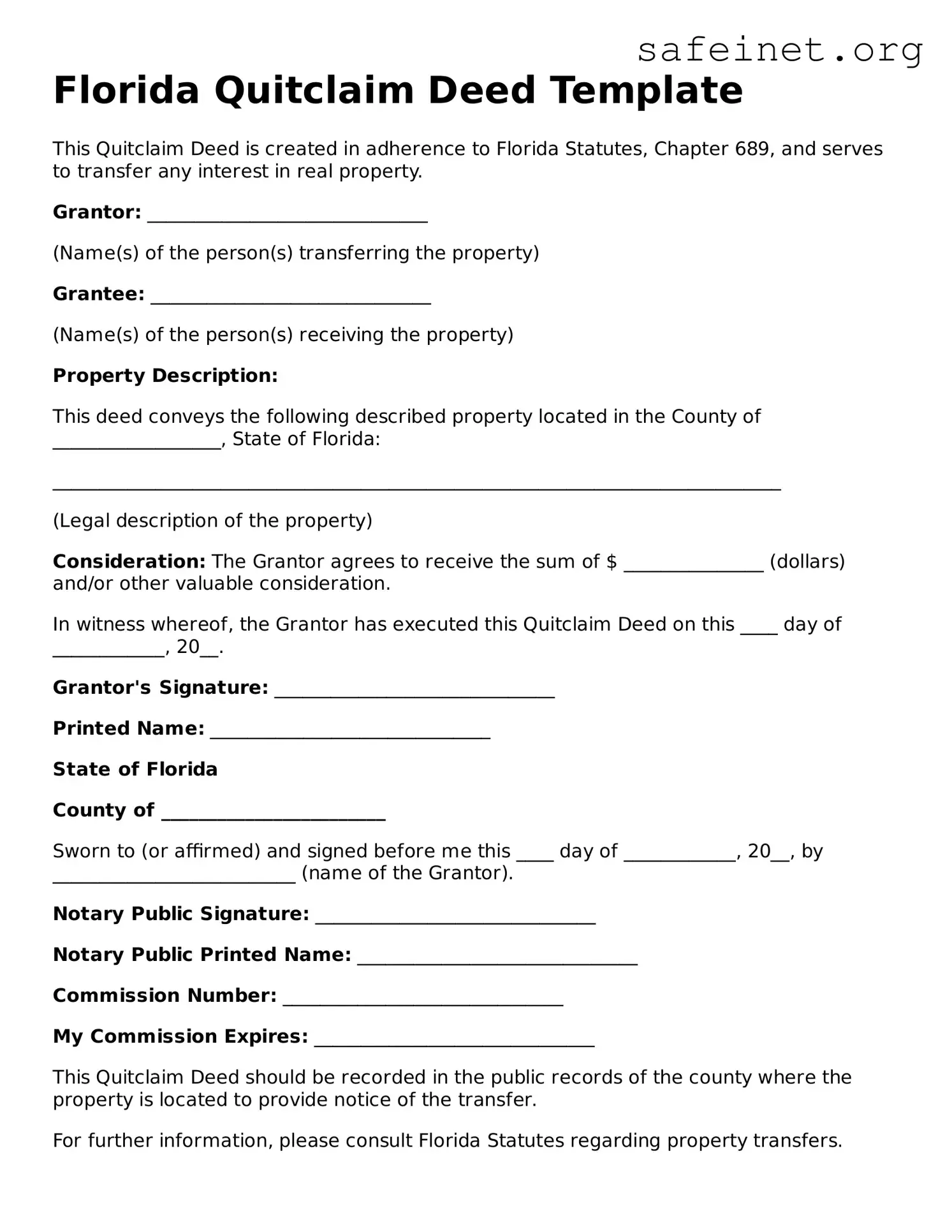Florida Quitclaim Deed Template
This Quitclaim Deed is created in adherence to Florida Statutes, Chapter 689, and serves to transfer any interest in real property.
Grantor: ______________________________
(Name(s) of the person(s) transferring the property)
Grantee: ______________________________
(Name(s) of the person(s) receiving the property)
Property Description:
This deed conveys the following described property located in the County of __________________, State of Florida:
______________________________________________________________________________
(Legal description of the property)
Consideration: The Grantor agrees to receive the sum of $ _______________ (dollars) and/or other valuable consideration.
In witness whereof, the Grantor has executed this Quitclaim Deed on this ____ day of ____________, 20__.
Grantor's Signature: ______________________________
Printed Name: ______________________________
State of Florida
County of ________________________
Sworn to (or affirmed) and signed before me this ____ day of ____________, 20__, by __________________________ (name of the Grantor).
Notary Public Signature: ______________________________
Notary Public Printed Name: ______________________________
Commission Number: ______________________________
My Commission Expires: ______________________________
This Quitclaim Deed should be recorded in the public records of the county where the property is located to provide notice of the transfer.
For further information, please consult Florida Statutes regarding property transfers.
